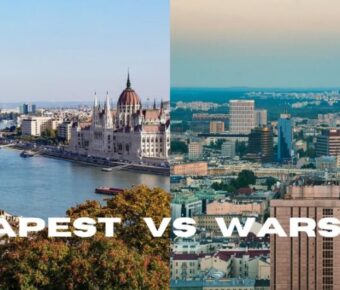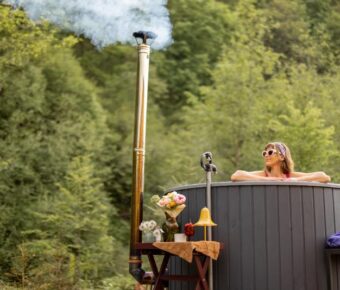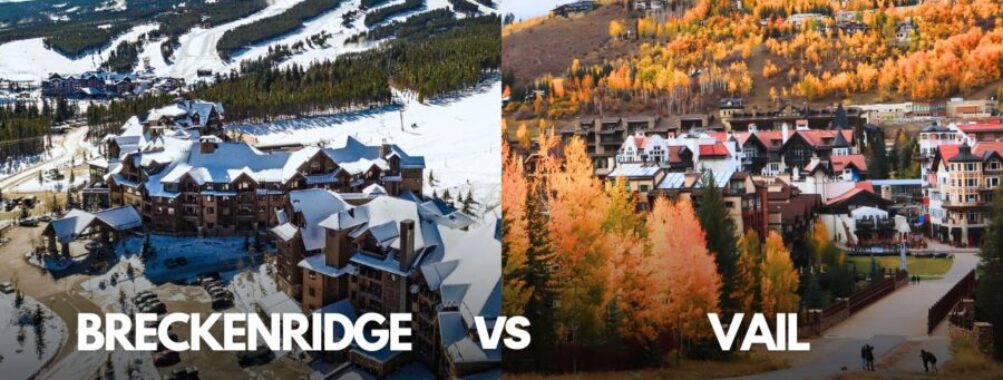
Breckenridge vs Vail: 7 Key Differences to Know Before Booking Your 2025 Colorado Ski Vacation
Planning a Colorado ski trip and can’t decide between two iconic destinations? Breckenridge and Vail offer distinctly different experiences despite being just 40 minutes apart.
Vail boasts more skiable terrain, with over 5,000 acres, than Breckenridge’s 2,900, but Breckenridge typically receives more annual snowfall. Vail features extensive back bowls and a European village atmosphere, while Breckenridge delivers a more authentic mountain town feel with its historic Main Street and vibrant year-round community.
Budget-conscious travelers might prefer Breckenridge, which offers more affordable lodging and dining options. The town’s charming atmosphere attracts visitors even outside ski season.
Meanwhile, Vail’s elegant village tends to be quieter during summer but delivers a more upscale, resort-style experience. Both mountains in Summit County provide amazing skiing experiences with unique advantages worth exploring.
Table of Contents
- Geographical Overview and Accessibility
- Location in Summit County
- Proximity to Major Cities
- Airport and Travel Routes
- Ski Terrain and Resort Facilities
- Comparing Mountain Statistics
- Lift Systems and Queues
- Variety of Slopes
- Village Ambiance and Cultural Highlights
- Architectural Style
- Dining and Shopping Experience
- Cultural Events and Festivities
- Accommodation and Lodging Options
- Luxury to Budget Range
- Proximity to Lifts
- Rental Properties vs. Hotels
- Seasonal Activities and Non-Ski Offerings
- Summer Adventures
- Family Entertainment
- Relaxation and Spa Facilities
- Cost Considerations and Travel Budgeting
- Lift Ticket Pricing
- Season Pass Benefits
- On-Mountain Expenses
- Environmental Conservation and Sustainability Efforts
- Green Initiatives
- Responsible Tourism
- Eco-Friendly Practices
- Frequently Asked Questions
- What are the differences in summer activities between Breckenridge and Vail?
- How do Breckenridge and Vail compare in terms of appeal to non-skiers?
- What is the most family-friendly option: Breckenridge or Vail?
- Which resort is best for beginners: Vail or Breckenridge?
- How does the nightlife experience differ between Vail and Breckenridge?
- In comparing Keystone, Breckenridge, and Vail, which offers the most well-rounded experience?
- Book Your Dream Experience
- More Travel Guides
Geographical Overview and Accessibility
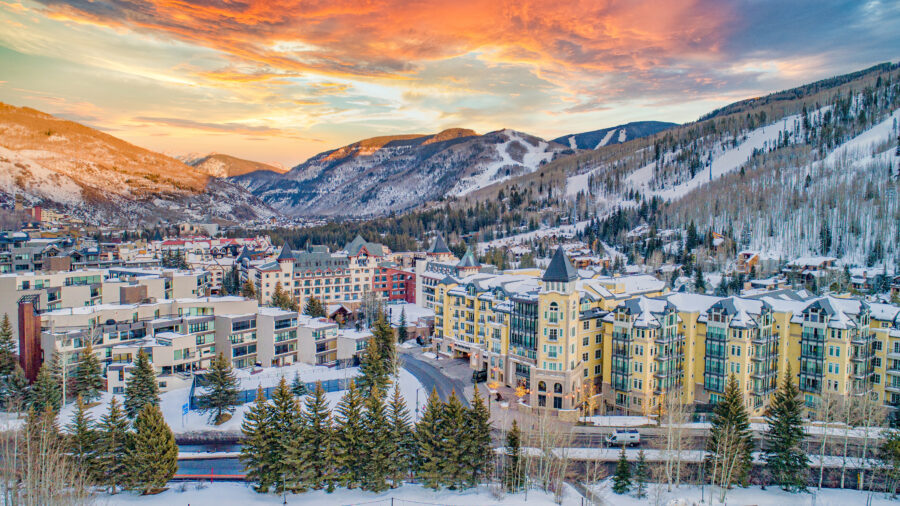
Breckenridge and Vail offer stunning mountain landscapes in Colorado but differ in their locations, elevations, and ease of access. These differences can impact your travel planning and overall experience at each destination.
Location in Summit County
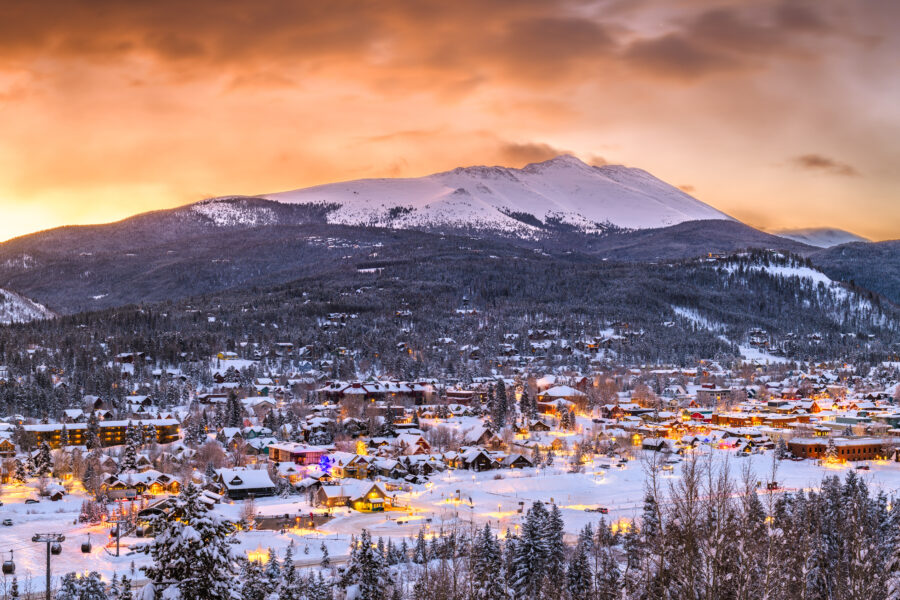
Breckenridge is nestled in Summit County at an impressive elevation of 9,600 feet above sea level. This high-altitude location gives visitors breathtaking panoramic views of the surrounding Rocky Mountains. The town sits at the base of the Ten Mile Range.
Vail, on the other hand, is located in Eagle County, not Summit County. It sits at a slightly lower elevation of around 8,150 feet. This elevation difference of about 1,450 feet can be noticeable for visitors sensitive to altitude.
Summit County is home to several other notable mountain towns besides Breckenridge, including Frisco and Silverthorne. These neighboring communities are worth exploring if you’re staying in the area.
Proximity to Major Cities
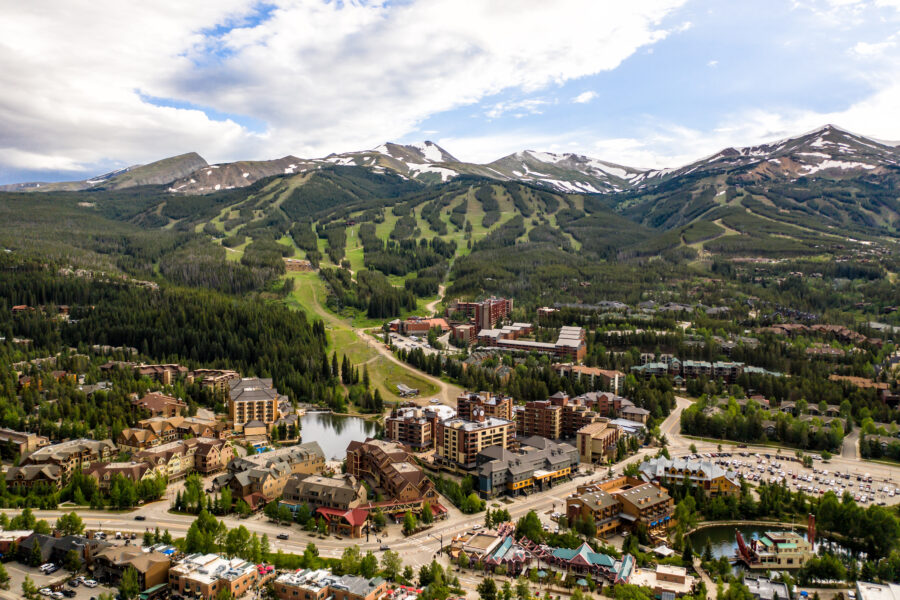
Breckenridge is slightly closer to Denver than Vail. The drive from Denver to Breckenridge is approximately 80 miles and typically takes 1.5-2 hours in good weather conditions.
Vail is about 95-100 miles from Denver, making the journey slightly longer at roughly 2 hours. However, travel times to both destinations can vary dramatically during peak traffic hours or severe winter weather.
I-70 serves as the main highway connecting both mountain towns to Denver. This route can get extremely congested during winter weekends and holidays when Denver residents head to the mountains. Traffic between Denver and these ski towns can add hours to your journey during peak times.
Airport and Travel Routes

Denver International Airport (DIA) serves as the primary air travel hub for visitors to both Breckenridge and Vail. From DIA, travelers can rent cars or take shuttle services directly to either destination.
For those seeking alternatives to driving from Denver, Eagle County Regional Airport is much closer to Vail (about 35 miles) and offers some direct flights from major cities during ski season. This can be a significant time-saver for Vail visitors.
Shuttle services operate regularly between DIA and both mountain towns. These can be more relaxing than driving yourself, especially during snowy conditions. The drive along I-70 features stunning mountain scenery but can be challenging in winter weather.
Local bus systems in both areas provide transportation once you’ve arrived. Breckenridge’s free shuttle system connects the town and ski areas, while Vail’s transit system is comprehensive.
Ski Terrain and Resort Facilities
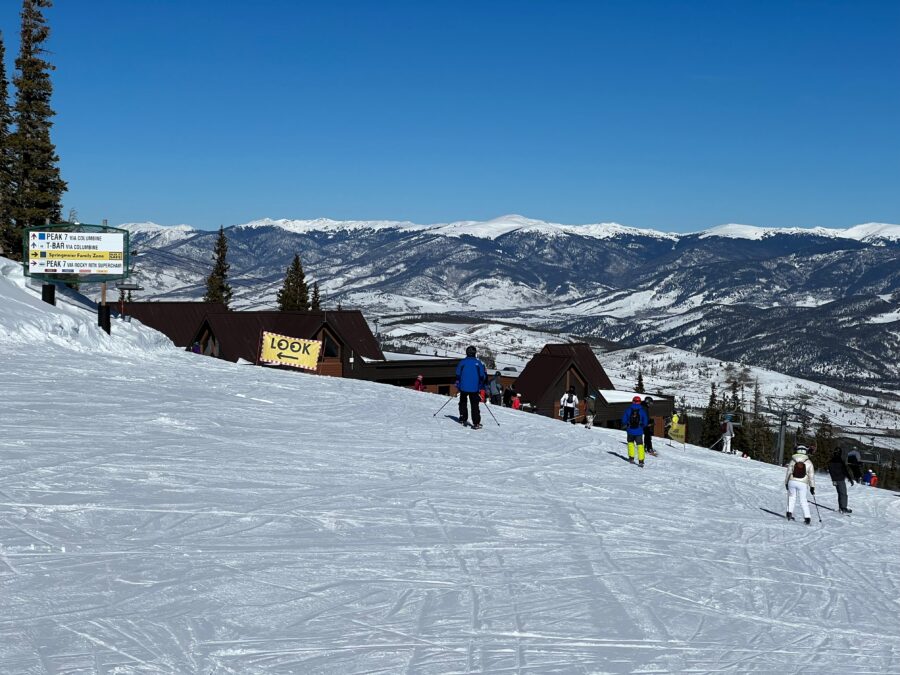
Vail and Breckenridge offer impressive skiing opportunities but differ significantly in their terrain and facilities. Vail boasts larger skiable terrain with its famous back bowls, while Breckenridge provides varied terrain across five peaks with high alpine skiing.
Comparing Mountain Statistics
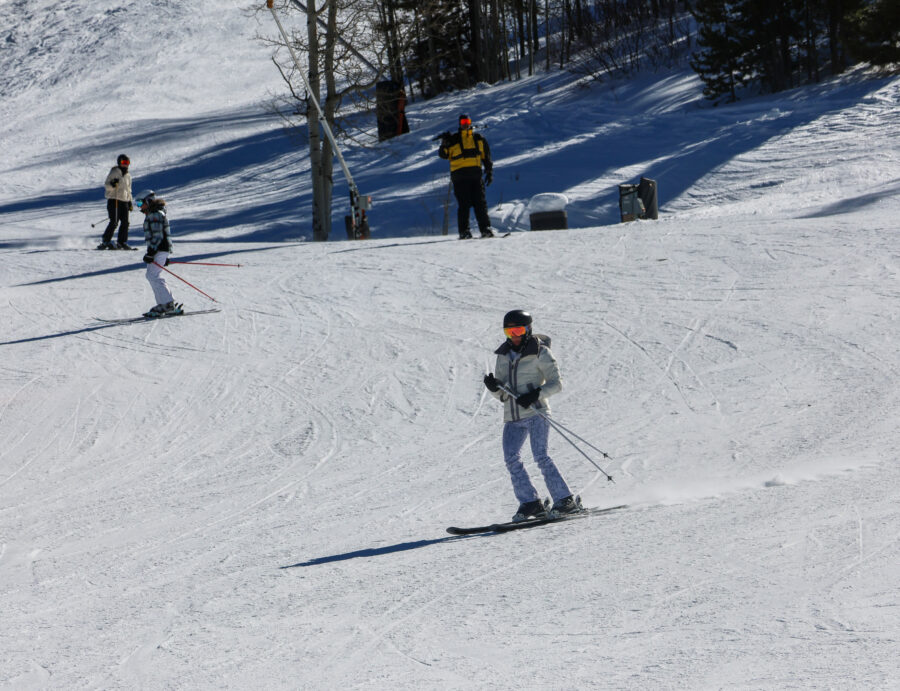
Vail dominates in size, offering approximately 5,317 acres of skiable terrain compared to Breckenridge’s 2,908 acres. This substantial difference gives Vail skiers nearly twice the space to explore. Vail’s legendary Back Bowls are a major draw, providing expansive open skiing that’s hard to match on powder days.
Elevation matters too. Breckenridge peaks at 12,998 feet with Imperial Express, North America’s highest chairlift. This high elevation ensures better snow quality throughout the season. Vail tops out at 11,570 feet, but its wider variety of terrain makes up for the slightly lower altitude.
| Resort | Skiable Acres | Top Elevation | Vertical Drop |
|---|---|---|---|
| Vail | 5,317 | 11,570 ft | 3,450 ft |
| Breckenridge | 2,908 | 12,998 ft | 3,398 ft |
Lift Systems and Queues
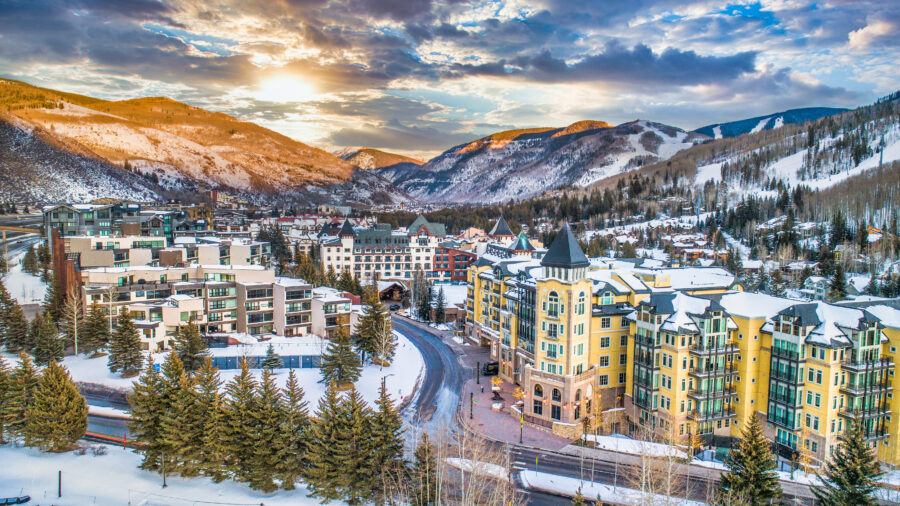
Vail operates 31 lifts with impressive uphill capacity, helping manage crowds despite its popularity. The resort has invested heavily in high-speed lifts, including several quad and six-person chairs that move skiers efficiently around the mountain.
Breckenridge runs 34 lifts across its five peaks. The Quicksilver SuperChair connects Peak 9 and Peak 10, making exploring different resort sections easier. Weekend lift lines at Breck can be longer, especially at the base areas and around mid-mountain connectors like the Peak 8 SuperConnect.
Both resorts have implemented RFID lift ticket technology to speed up the process. Morning lines tend to be shorter at Vail, partly due to its spread-out base areas and many visitors staying slope-side rather than commuting in.
Variety of Slopes
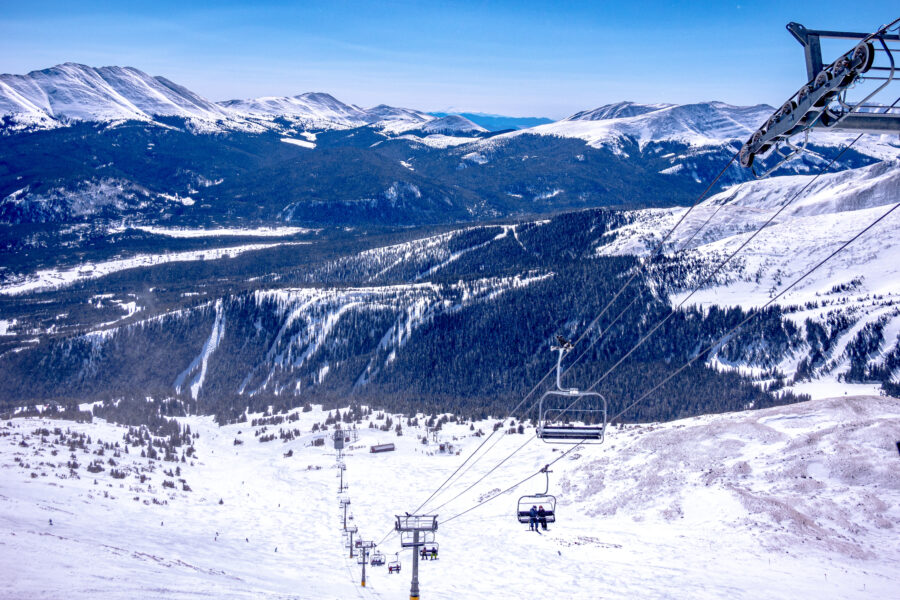
Vail excels in intermediate terrain with endless cruisers and its famous back bowls, which provide powder-filled fun on snowy days. The Front Side offers well-groomed runs, while Blue Sky Basin features gladed terrain that appeals to adventurous skiers. About 53% of Vail’s terrain suits intermediate skiers.
Breckenridge shines with its high-alpine terrain and varied difficulty across five peaks. Beginners appreciate the gentle slopes on Peak 9, while experts head to the challenging double-black diamond runs off Peak 10 and above the tree line on Peak 8. The T-Bar and Imperial Express access some of Colorado’s highest lift-served terrain.
For terrain parks, Breckenridge takes the edge with its nationally recognized parks and superpipe. The resort consistently ranks among the best in North America for freestyle terrain, making it a favorite for park enthusiasts and pros alike.
See Related: Park City vs Breckenridge: Which Premier Ski Destination Offers the Ultimate Mountain Experience?
Village Ambiance and Cultural Highlights
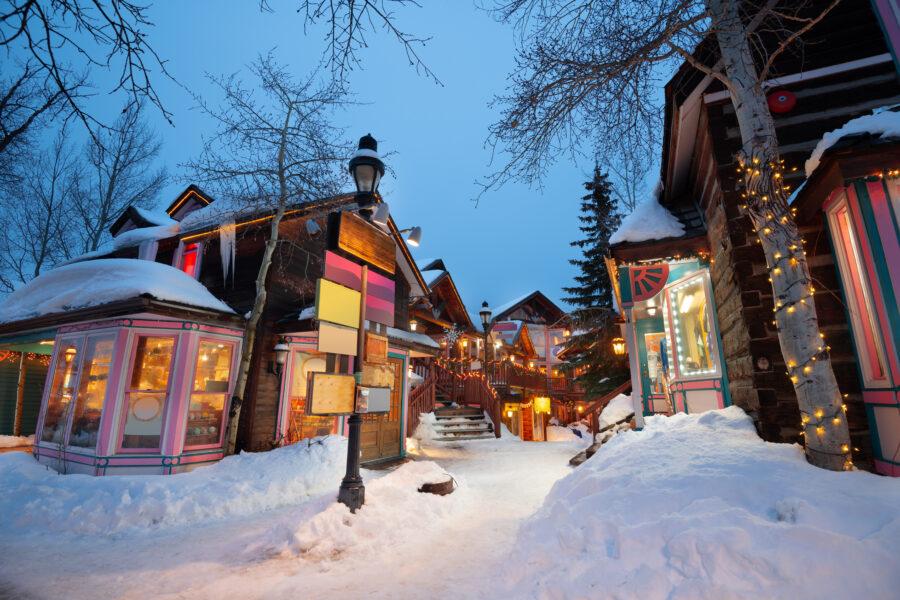
Breckenridge and Vail offer distinctly different atmospheres that shape visitors’ experiences. Breckenridge embraces its historic mining town roots while Vail presents a curated European-inspired village setting.
Architectural Style
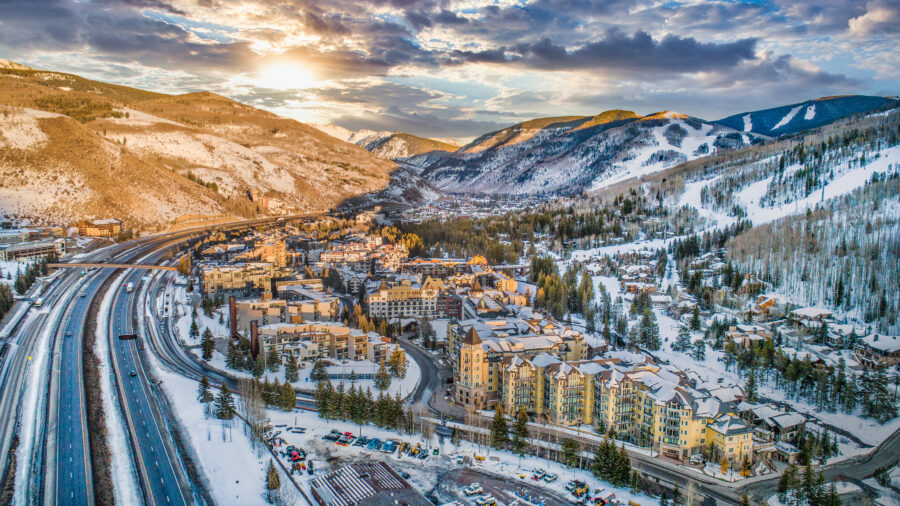
Breckenridge charms visitors with its authentic 19th-century mining town architecture. The colorful Victorian buildings along Main Street house shops and restaurants in structures that have stood for over 100 years. Many buildings display historical markers explaining their original purpose during the Gold Rush era.
Vail Village, in contrast, was built from scratch in the 1960s with deliberate European Alpine styling. The village features Tyrolean-inspired architecture with wooden balconies, peaked roofs, and stone facades. Walking through Vail feels like you’ve been transported to a luxury Alpine village in Austria or Switzerland.
The difference in building age is notable—Breck preserves history while Vail creates an idealized European fantasy. This architectural distinction forms the foundation for each destination’s unique feel.
Dining and Shopping Experience
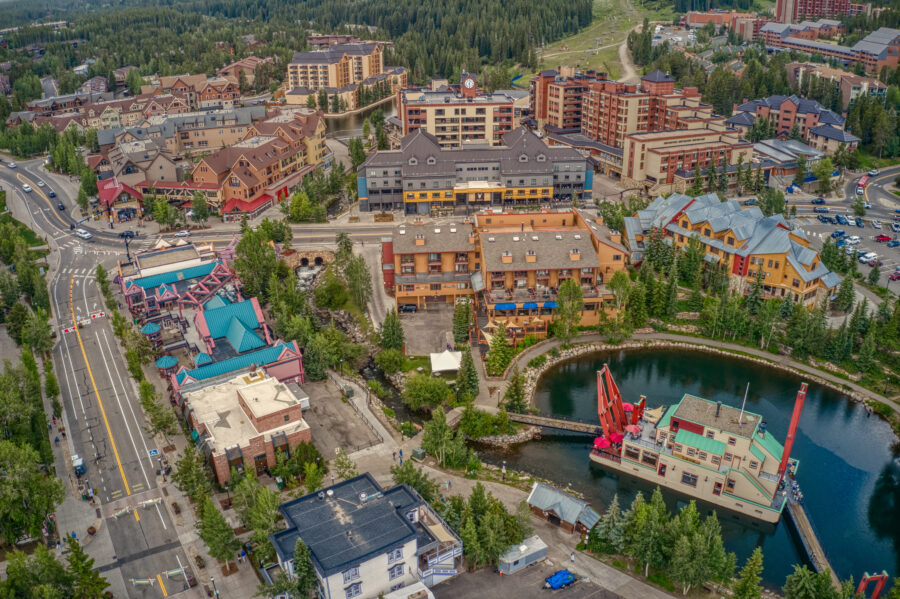
Breckenridge’s dining scene tends toward casual, approachable eateries with a local flair. Family-owned restaurants, craft breweries, and quirky cafes are spread throughout town. Shopping focuses on outdoor gear shops, local artisan goods, and practical stores serving tourists and locals.
Vail’s dining landscape leans upscale with celebrity chef restaurants and fine dining experiences. The village features high-end boutiques selling luxury brands alongside art galleries and specialty shops. Prices generally run higher in Vail than in Breckenridge.
The attitude difference is noticeable, too. Breck maintains a laid-back, friendly vibe where jeans and flannel feel appropriate anywhere. Vail can feel more formal, with some restaurants expecting evening attire and a clientele that includes more international visitors.
Cultural Events and Festivities
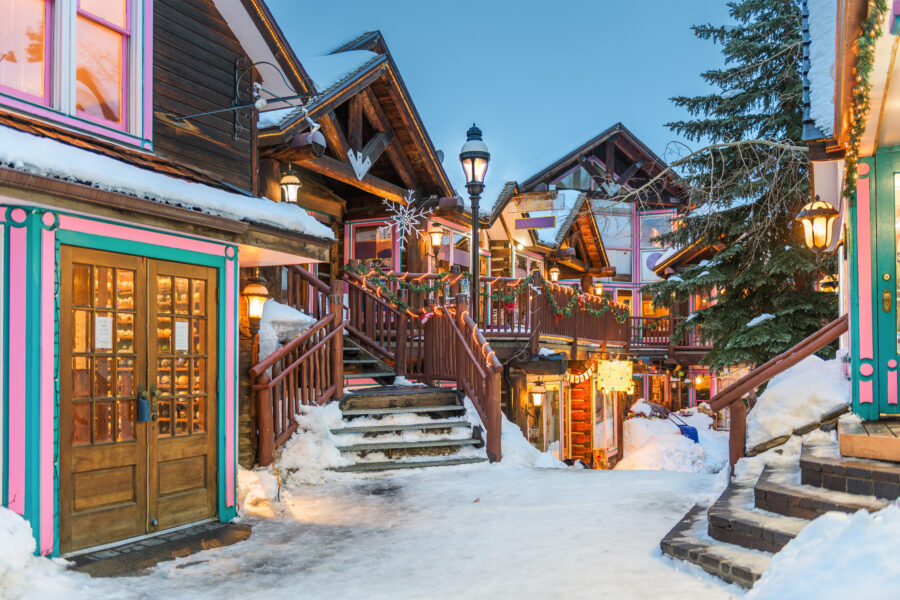
Breckenridge hosts events that celebrate its mining heritage and mountain culture. The Ullr Fest honors the Norse god of snow with a quirky parade and town-wide parties. The International Snow Sculpture Championships transform snow blocks into amazing art each January.
Vail’s cultural calendar showcases refined arts programming and gourmet events. Each summer, the Bravo! Vail Music Festival brings world-class orchestras to the mountains. The Taste of Vail highlights fine dining with food and wine pairings from top chefs.
Both towns offer summer farmers markets, but they have different vibes. Breck’s market feels like a community gathering, while Vail’s emphasizes gourmet and artisanal products. Checking each destination’s event calendar might help you choose which mountain town better matches your interests.
Accommodation and Lodging Options
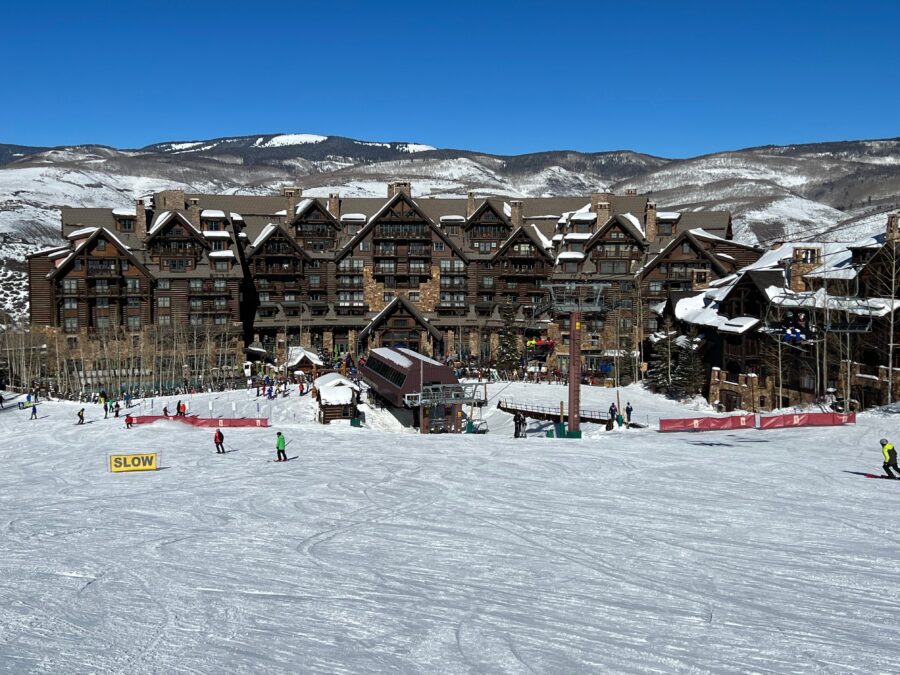
When choosing between Breckenridge and Vail, your lodging experience will differ significantly based on location, style, and price point. Both destinations offer diverse options that cater to different preferences and budgets.
Luxury to Budget Range
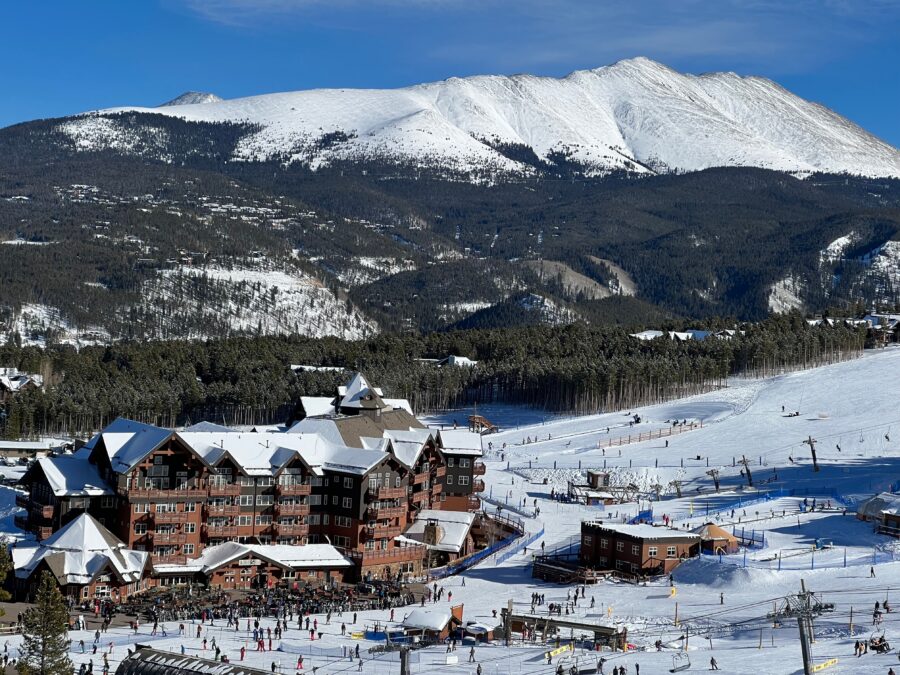
Vail tends to be more upscale in its accommodations. The pseudo-Alpine village atmosphere comes with a premium price tag—housing costs run about 50% higher than in Breckenridge. Luxury hotels and high-end condos dominate the Vail Village and Lionshead areas, catering to travelers seeking premium amenities.
Breckenridge offers a broader range of price points. While luxury options exist, visitors can find mid-range and budget-friendly accommodations more easily than in Vail.
The Victorian mining town charm extends to its lodging, with historic buildings converted to B&Bs alongside modern hotel options. Breckenridge typically provides more affordable options for families watching their budget without sacrificing comfort or convenience.
Proximity to Lifts
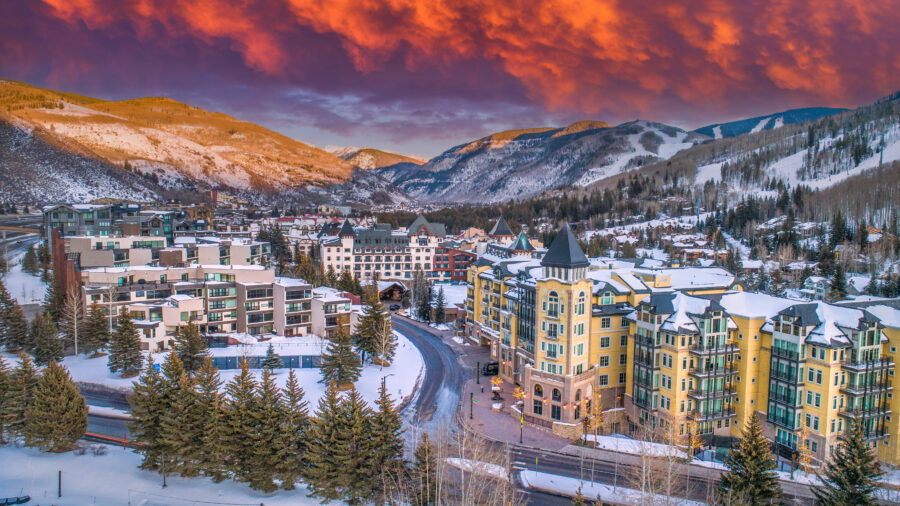
Both destinations feature ski-in/ski-out properties, but their distribution differs considerably. In Vail, accommodations throughout Vail Village and Lionshead provide excellent access to lifts. The pedestrian-friendly village layout means most lodging options are within a short walk of skiing, and many properties offer ski valet services.
Breckenridge’s lift-accessible accommodations cluster around several base areas. Properties near Peak 8 and Peak 9 offer the most convenient ski access.
Downtown lodging requires a short shuttle ride or walk to reach the slopes. The gondola connecting Breckenridge town to the mountain helps bridge this gap for visitors staying in town center properties.
Rental Properties vs. Hotels
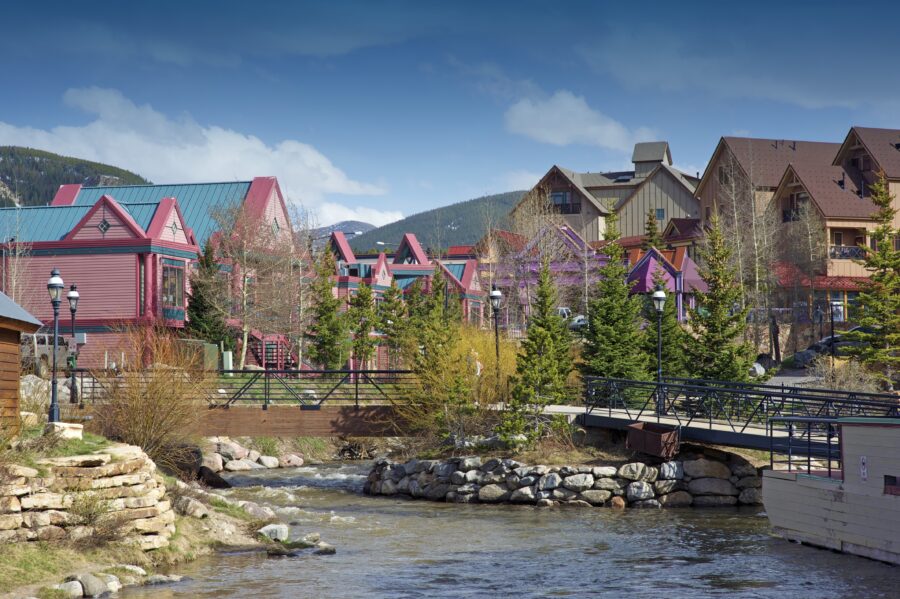
Vail excels in hotel offerings, particularly in the luxury segment. Five-star hotels with full-service spas, gourmet restaurants, and concierge services abound. Rental condos tend to be upscale with high-end finishes and amenities.
Breckenridge shines with its variety of rental properties. The rental inventory is vast and diverse, from cozy mountain cabins to spacious family homes and modern condos. Many properties offer mountain views and hot tubs.
For groups and families, Breckenridge rentals often provide more space for the money. Hotels in Breckenridge tend to be boutique-style or mid-range chains rather than ultra-luxury properties.
Seasonal Activities and Non-Ski Offerings
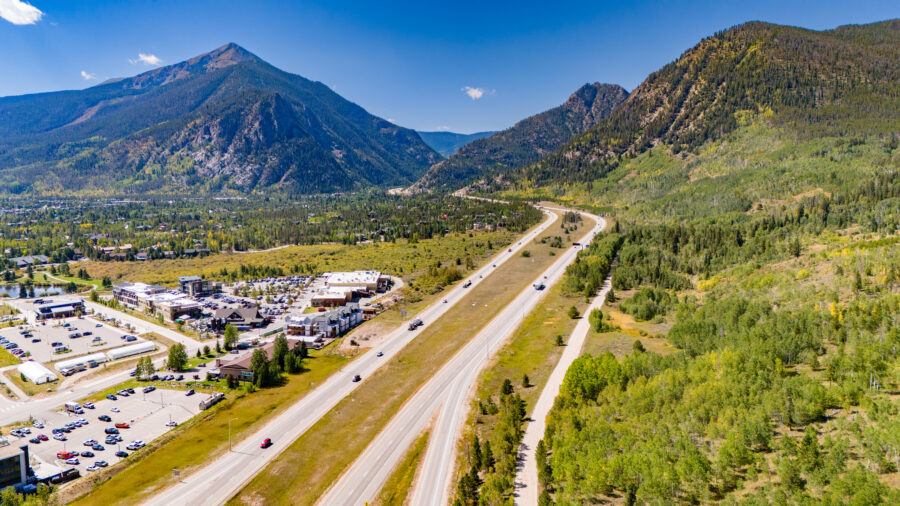
Both Breckenridge and Vail transform throughout the year, offering visitors plenty to do beyond skiing. These mountain towns shine with unique summer activities, family-friendly entertainment, and relaxation options that make them year-round destinations.
Summer Adventures
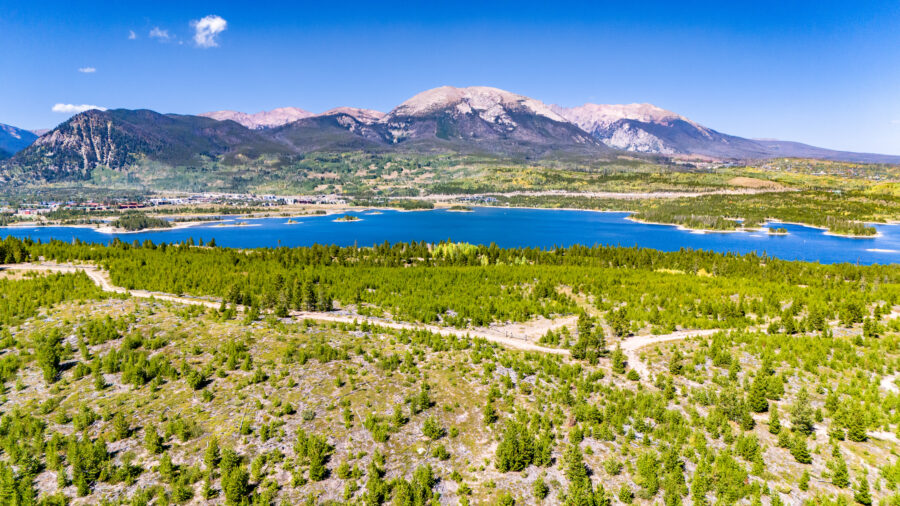
Breckenridge and Vail unveil a new world of outdoor fun when the snow melts. Hiking trails abound in both locations, with Breck offering easy access to stunning alpine lakes and Vail featuring meadows filled with wildflowers during peak season.
Mountain biking is huge in both towns. Breckenridge’s network of trails caters to all skill levels, while Vail boasts world-class downhill courses at its bike park. During summer, many lifts run to carry bikers and hikers up the mountain.
Fishing enthusiasts will find Gold Medal waters near both destinations. The Blue River in Breckenridge and Gore Creek in Vail offer excellent trout fishing opportunities.
Whitewater rafting trips run on nearby rivers, with outfitters in both towns providing experiences ranging from family-friendly floats to adrenaline-pumping rapids. Vail tends to have more upscale outfitters, while Breck offers more budget-friendly options.
Family Entertainment
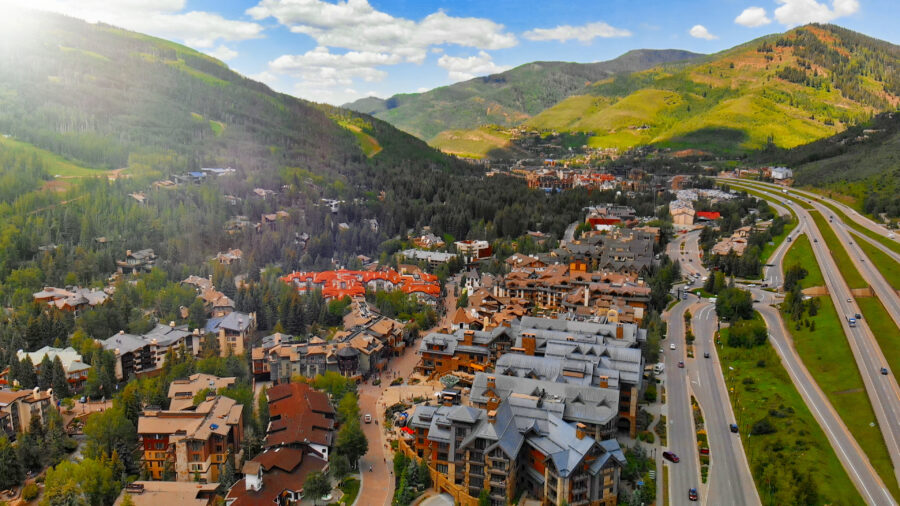
Both mountain towns excel at entertaining families year-round. Breckenridge’s Main Street features a historic downtown with kid-friendly shops, ice cream parlors, and the Mountain Top Children’s Museum that offers hands-on exhibits.
Vail’s Adventure Ridge, located at the top of the Eagle Bahn Gondola, provides family activities like tubing, ziplines, and a mountain coaster during winter and summer. The village also hosts free concerts and events throughout the year.
Epic Discovery at both locations transforms ski areas into summer adventure parks with activities like:
- Ziplines and aerial adventures
- Mountain coasters
- Climbing walls
- Bungee trampolines
Winter brings additional family options beyond skiing. Both towns offer ice skating, sledding hills, and sleigh rides. When the weather turns bad, Vail’s larger village area contains more indoor entertainment options, including bowling and movie theaters.
Relaxation and Spa Facilities
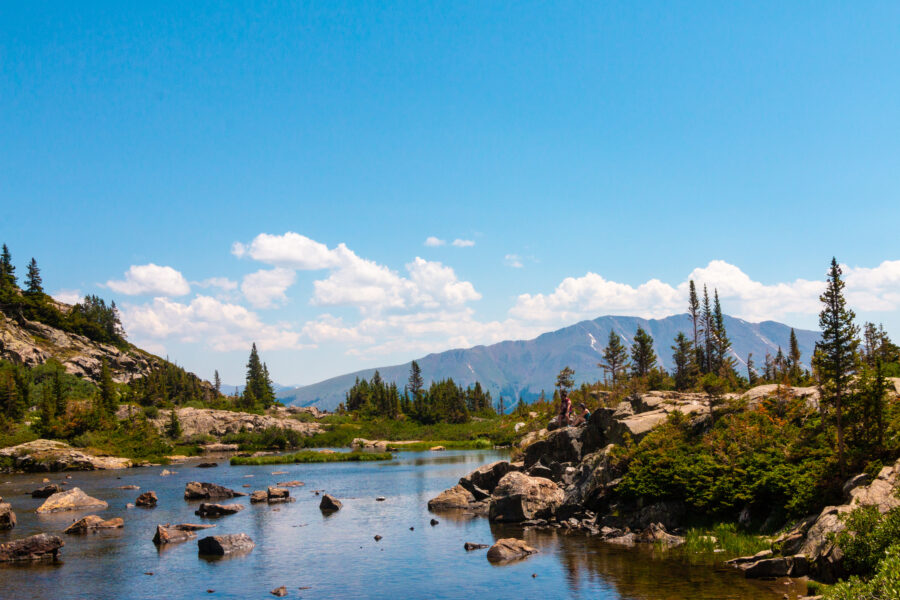
Both destinations offer excellent ways to unwind after active days outdoors. Vail takes the lead with luxury spa experiences, housing several high-end hotel spas like the one at Four Seasons and The Arrabelle. These facilities offer mountain-inspired treatments using local ingredients.
Breckenridge provides more accessible spa options at various price points. The Infinity Spa at Grand Lodge features treatments designed specifically for altitude adjustment, which can be helpful for visitors from lower elevations.
Both towns have yoga studios offering drop-in classes. During peak seasons, Vail attracts more celebrity instructors and specialized workshops.
Both areas have natural hot springs within driving distance for pure relaxation. The closest to Breckenridge is Hot Sulphur Springs, while Vail visitors often go to Glenwood Springs for its famous mineral pools.
Public recreation centers in both towns provide affordable access to swimming pools, hot tubs, and fitness equipment—perfect for families wanting budget-friendly recovery options after a day in the mountains.
See Related: Colorado Ski Trip Cost: Affordable Luxury Under $1000/Week
Cost Considerations and Travel Budgeting

Planning a ski trip to Colorado’s premier destinations requires careful budgeting. Vail typically comes with a higher price tag than Breckenridge across most expense categories, though both resorts offer various options to maximize value.
Lift Ticket Pricing
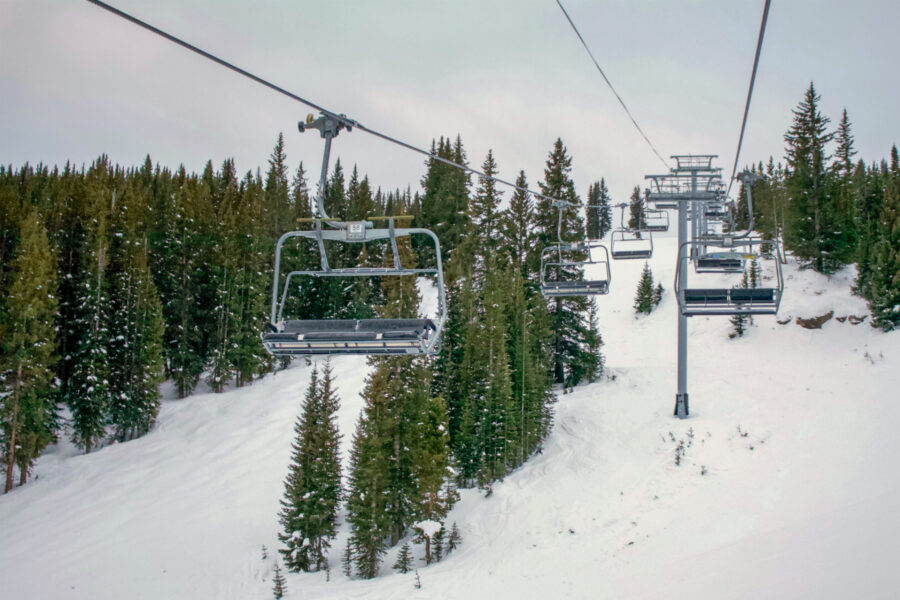
Vail lift tickets cost more than Breckenridge, with daily day passes running about $10-20 higher. For the 2024-2025 season, expect to pay around $180-230 at Vail, depending on the day, while Breckenridge averages $165-210.
Both resorts implement dynamic pricing models where tickets purchased further in advance cost significantly less. Weekend and holiday periods command premium prices, while midweek skiing offers better rates.
Multi-day tickets provide better daily rates than single-day purchases. For example, a 3-day ticket might save travelers 15-20% compared to buying individual day passes.
Neither resort sells walk-up tickets anymore – all purchases must be made online or through official channels in advance.
Season Pass Benefits
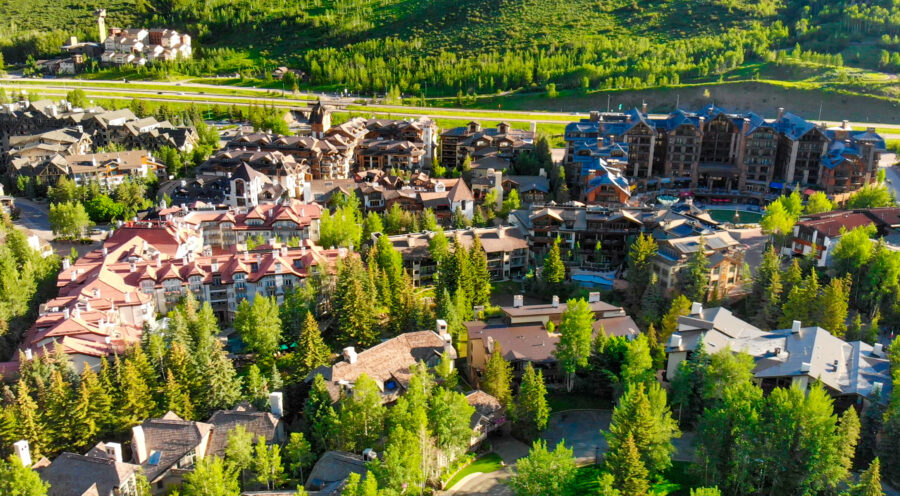
The Epic Pass remains the best value for skiers planning multiple days at either destination. The full Epic Pass includes unlimited skiing at both Vail and Breckenridge, plus dozens of other resorts worldwide.
The Epic Local Pass is a more affordable option for skiers who ski for fewer days. It has some holiday restrictions at Vail, but full access to Breckenridge.
Epic Day Passes let visitors customize their experience with 1-7 day options at reduced rates compared to window prices. These passes must be purchased before the season begins.
Passholders receive additional perks, including:
- 20% discounts on food and beverages
- 15% off retail purchases
- Priority access to lodging deals
- Buddy tickets at reduced rates
On-Mountain Expenses
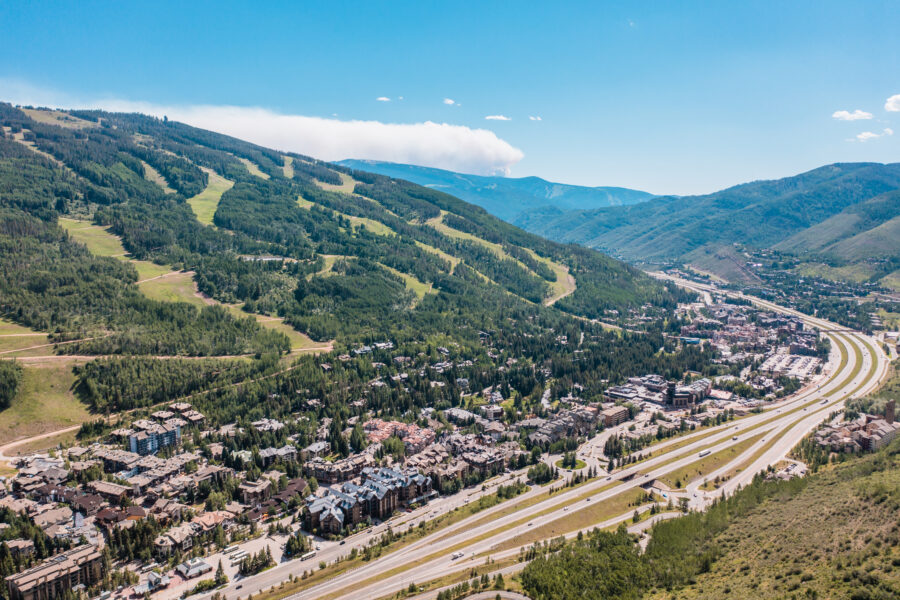
Food costs significantly more at Vail’s on-mountain dining facilities than at Breckenridge’s. A basic lunch with a sandwich, chips, and drink costs about $20-25 at Breckenridge versus $25-35 at Vail.
Both resorts offer various dining options ranging from cafeteria-style to upscale sit-down restaurants. Bringing snacks or packing a lunch can save a family of four $75-100 daily.
Equipment rentals show less price difference between the locations. Basic ski packages start around $45-60 daily, with premium demo equipment running $80-100 per day.
Smart travelers should look for rental shops in town rather than at the base areas, where prices often run 20-30% less. Many shops also offer multi-day discounts and free overnight storage. Ski lessons at Vail typically cost 10-15% more than comparable offerings at Breckenridge, though both resorts provide excellent instruction options for all skill levels.
Environmental Conservation and Sustainability Efforts
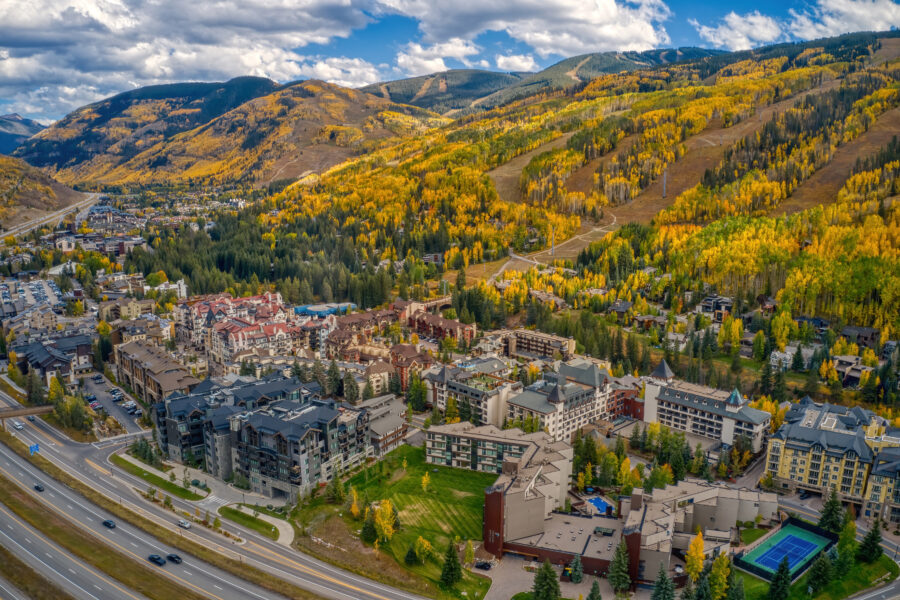
Breckenridge and Vail have made impressive strides in protecting the alpine environments that make them special. These Colorado ski resorts recognize that their future depends on preserving the natural beauty that draws visitors year after year.
Green Initiatives
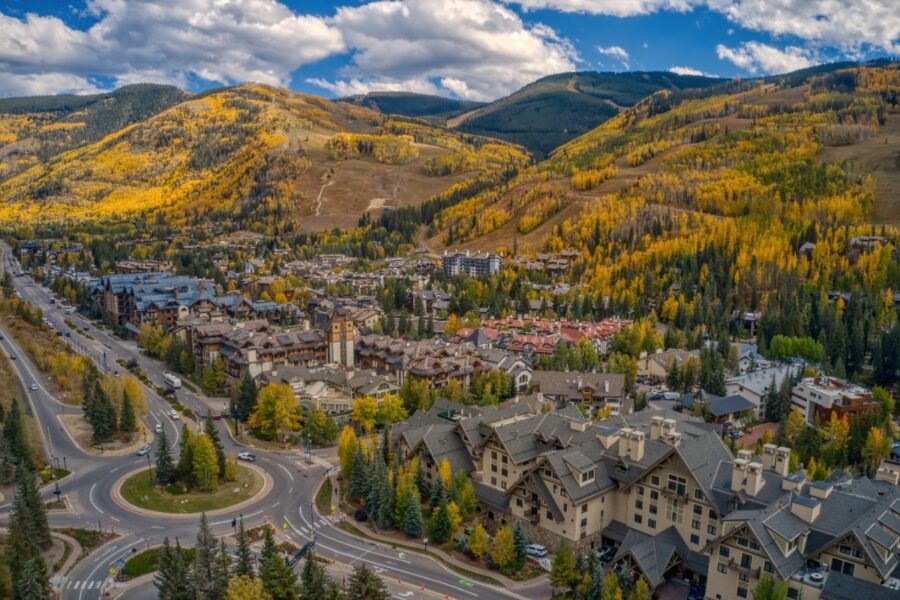
Vail Resorts, which owns both Vail Mountain and Breckenridge, launched an ambitious program called “Epic Promise” with bold environmental targets. Their most impressive goal? Reaching zero net emissions by 2030! This isn’t just talk—they’re actively working toward it.
Breckenridge partners with Mountain Dew on waste reduction programs that support Vail Resorts’ commitment to achieve zero waste to landfill by 2030. The resort has installed more efficient snowmaking equipment that uses less energy while producing the same great snow conditions.
Vail has invested millions in renewable energy projects, including wind power purchases that offset much of their electricity use. Solar panels now dot several buildings throughout both resorts, generating clean power for operations.
Responsible Tourism
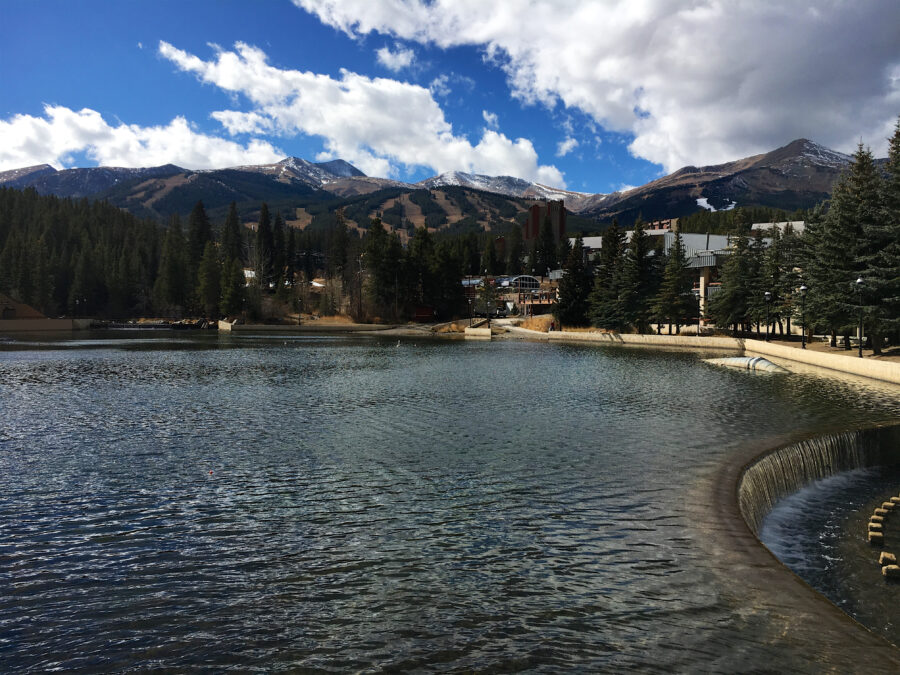
Both resorts actively educate visitors about minimizing their environmental impact. Trail maps and signs remind skiers to stay on designated paths to protect fragile alpine ecosystems.
The “B Like Breckenridge” program promotes sustainable tourism practices among visitors. It focuses on environmental, economic, and social sustainability, with projects like Green Commuting encouraging locals and tourists to reduce car use.
Vail’s visitor education programs include information kiosks explaining local wildlife and the importance of mountain ecosystems. The resort has also created protected wildlife corridors to ensure animals can migrate safely. Both destinations encourage visitors to bring reusable water bottles with convenient filling stations throughout the mountains.
Eco-Friendly Practices
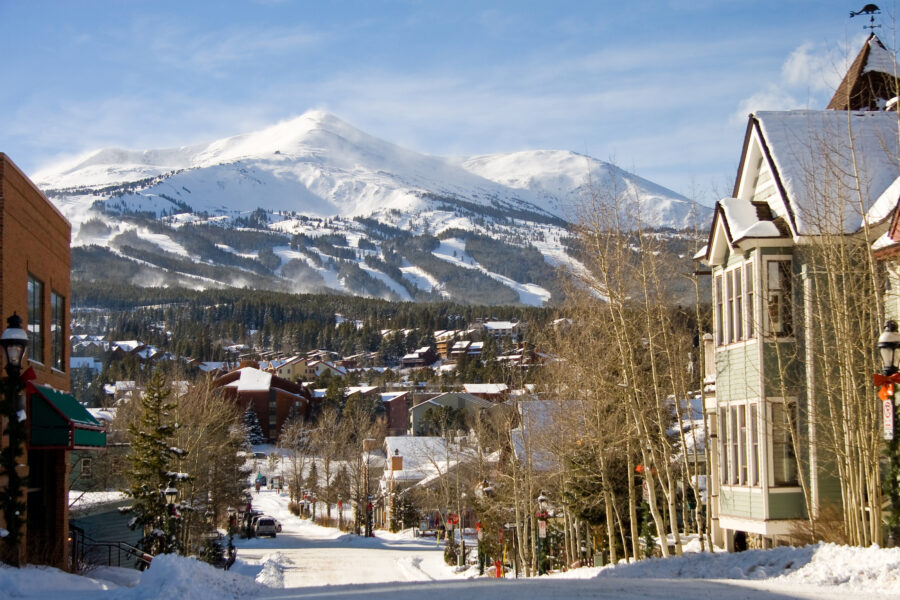
Water conservation is crucial in these mountain environments. Both resorts have installed low-flow fixtures in lodges and restaurants, significantly reducing water usage.
Breckenridge has improved its recycling infrastructure both on the mountain and in the village. Marked bins make it easy for visitors to properly dispose of waste, and staff members regularly sort through collected materials.
Vail has transitioned much of its snowcat and maintenance vehicle fleet to more efficient models that produce fewer emissions. The resort also uses biodiesel when possible for these vehicles. Both destinations have improved their buildings’ insulation and heating systems to reduce energy consumption during the cold winter months.
See Related: Breckenridge vs Aspen: Key Differences to Know Before Booking Your Colorado Ski Getaway
Frequently Asked Questions
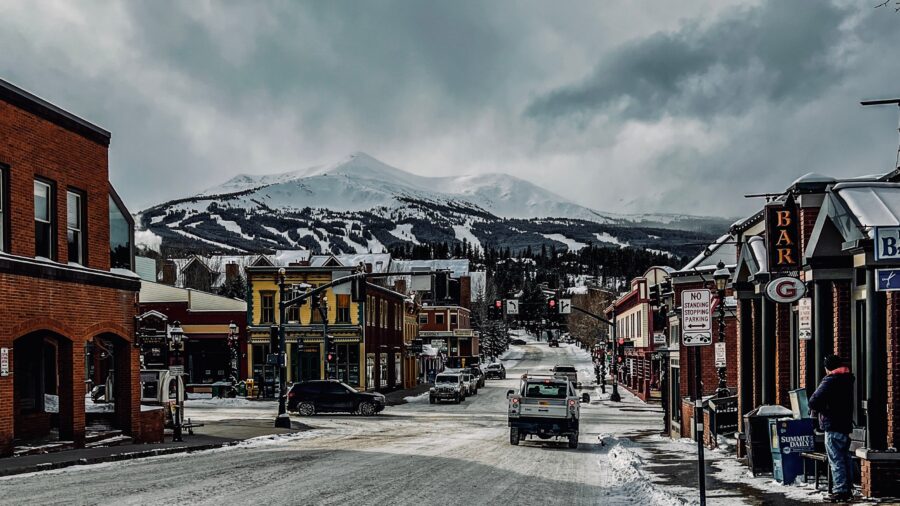
Choosing between Breckenridge and Vail involves considering what matters most for your mountain vacation. Both destinations offer unique experiences that extend beyond winter skiing.
What are the differences in summer activities between Breckenridge and Vail?
Breckenridge shines in summer with its authentic mountain town vibe. The historic Main Street buzzes with festivals, and outdoor enthusiasts enjoy extensive hiking and mountain biking trails. The Blue River offers fantastic fly fishing opportunities, too.
Vail transforms in summer with lush greenery replacing snowy slopes. The village hosts farmers’ markets and outdoor concerts. Mountain biking is excellent here, with Vail’s famous Epic Discovery adventure park offering ziplines, ropes courses, and alpine coasters.
Both towns have golf courses, but Vail’s are considered more upscale. For families, Breckenridge’s Alpine Slide and summer fun park give it a slight edge for kid-friendly activities.
How do Breckenridge and Vail compare in terms of appeal to non-skiers?
Breckenridge offers non-skiers a charming historic mining town with over 200 shops, restaurants, and galleries on Main Street. The town’s museums and landmark tours provide cultural experiences you won’t find in Vail.
Non-skiers in Vail enjoy the European-inspired villages with upscale shopping and art galleries. The Vail Valley offers snowshoeing, ice skating, and spa experiences. Vail’s dining scene features more high-end options than Breckenridge’s casual eateries.
Shopping tends to be pricier in Vail, while Breckenridge offers more diverse options at various price points. Both destinations have excellent spas, though Vail’s tend to be more luxurious.
What is the most family-friendly option: Breckenridge or Vail?
Breckenridge is popular with families because of its laid-back atmosphere and variety of affordable lodging options. The town’s pedestrian-friendly layout makes getting around with kids easier. Breck’s ski school has excellent programs for children.
Vail offers more upscale family experiences with beautiful villages and convenient ski-in/ski-out accommodations. The mountain’s layout makes it easier to meet up throughout the day. Vail’s Adventure Ridge offers family activities like tubing and snow biking.
Cost is a significant factor – families can stretch their budget further in Breckenridge while Vail typically requires deeper pockets. Both resorts have excellent children’s ski schools and family-friendly dining options.
Which resort is best for beginners: Vail or Breckenridge?
Breckenridge has excellent beginner terrain on Peak 8 and Peak 9 with wide, gentle slopes perfect for learning. The ski school is top-notch with dedicated learning areas. Breck’s lower base elevation can make the learning experience slightly less challenging.
Vail offers beginners beautiful, wide-open runs that are well-groomed and less crowded. The Eagle Bahn Gondola area has fantastic beginner terrain. Vail’s ski school has an outstanding reputation with small class sizes.
Both mountains get crowded, but Vail’s size means beginners can often find quieter areas to practice. Cost-wise, Breckenridge is generally more affordable for beginners who need lessons, rentals, and lodging.
How does the nightlife experience differ between Vail and Breckenridge?
Breckenridge boasts a livelier nightlife scene with various bars and pubs catering to different crowds. Main Street comes alive after dark with live music venues, sports bars, and casual spots where locals and visitors mix easily.
Vail’s nightlife is more upscale and refined, centered around the villages. Expect sophisticated wine bars, craft cocktail lounges, and elegant restaurants. The scene tends to be quieter and more subdued than Breckenridge’s energy.
Breck attracts a younger crowd looking for fun, while Vail tends to draw an older, more affluent group. Last call is typically later in Breckenridge, with some spots staying open until 2 AM.
In comparing Keystone, Breckenridge, and Vail, which offers the most well-rounded experience?
Vail provides the most complete luxury mountain experience with its vast terrain, beautiful villages, and upscale amenities. The resort’s size means less crowding on the mountain and more variety for all skill levels.
Breckenridge offers the best balance of authentic town atmosphere, diverse skiing, and reasonable prices. The historic charm combined with modern amenities makes it appealing to many different types of travelers.
Keystone stands out for families and value-seekers with night skiing options and a less expensive price tag. Although its terrain is less varied than the other two, the resort excels at providing quality experiences without the premium prices.

